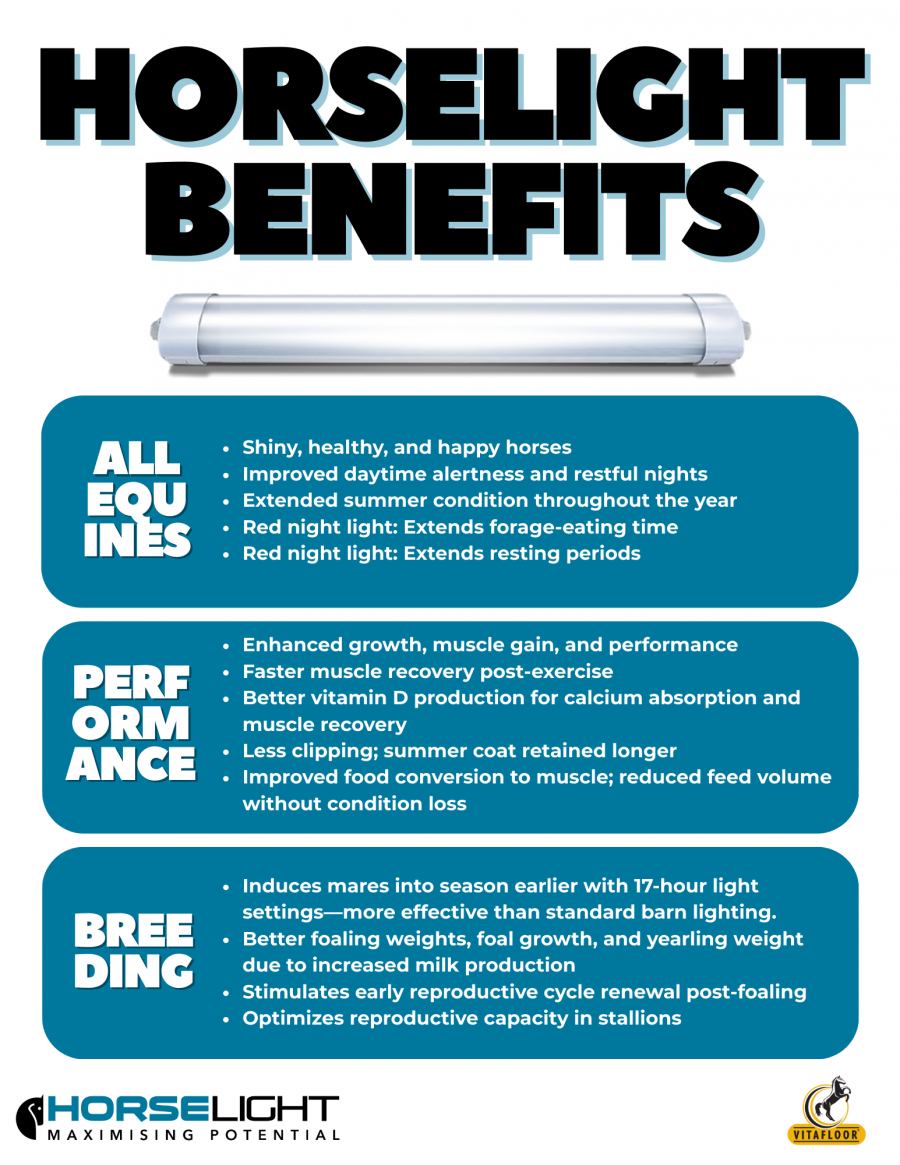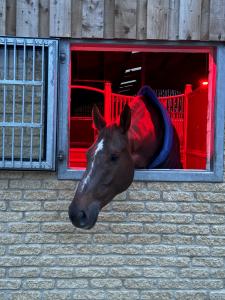
Horses May Miss Critical Light Exposure During Summer Stall Time
Equine light therapy systems offer year-round benefits beyond winter months.
OCALA, FL, UNITED STATES, May 8, 2025 /EINPresswire.com/ -- As summer heat intensifies across much of North America and Canada, horse owners are adjusting routines to protect animals from soaring temperatures and persistent insects. In many barns, that means stalling horses during the day and turning them out at night—offering relief from heat stress, but also creating an often-overlooked consequence: lack of natural light exposure.
While equine light therapy systems are typically associated with the dark days of winter, experts are drawing attention to the importance of maintaining healthy light cycles year-round. Horses rely on light to regulate their circadian rhythms—biological processes that influence sleep, hormone balance, immune response, and reproductive health. When those rhythms are disrupted, it can lead to behavioral changes, fatigue, metabolic imbalance, and difficulty in breeding programs.
“People often assume summer solves the issue of light deprivation,” said Holm Oostveen, President of Vitafloor USA Inc. “But in many regions, horses are kept indoors during peak daylight hours, which unintentionally cuts off their access to the very light their bodies rely on.”
To address this, equine facilities have increasingly turned to biologically optimized lighting systems like HorseLight—an automatic blue light technology developed to simulate the biological effects of natural daylight indoors. The system delivers targeted spectrums of blue-enriched white light during the day, supporting alertness, hormone regulation, and vitamin D synthesis, while switching to red light at night to maintain melatonin levels and support rest. Unlike standard barn lighting, these systems are designed to align with horses’ internal body clocks by providing consistent, circadian-supportive lighting—even when natural light is limited or inaccessible.
The implications go beyond daily comfort. Stable lighting that aligns with circadian biology has been linked to improvements in coat condition, mood stability, and performance recovery. In breeding stock, proper light cycles can aid in reproductive timing, milk production, and foal development.
As equine management practices continue to evolve, attention to light exposure is becoming as critical as diet, turnout, and exercise. Whether managing competition horses or broodmares, experts say supporting consistent biological light cues can make a measurable difference in health and performance—regardless of the time of year.
Malou Oostveen
Vitafloor USA Inc.
marketing@vitafloor.com
Visit us on social media:
Instagram
Facebook
YouTube
TikTok
X
Distribution channels: Agriculture, Farming & Forestry Industry, Building & Construction Industry, Consumer Goods, Culture, Society & Lifestyle, Gifts, Games & Hobbies
Legal Disclaimer:
EIN Presswire provides this news content "as is" without warranty of any kind. We do not accept any responsibility or liability for the accuracy, content, images, videos, licenses, completeness, legality, or reliability of the information contained in this article. If you have any complaints or copyright issues related to this article, kindly contact the author above.
Submit your press release


